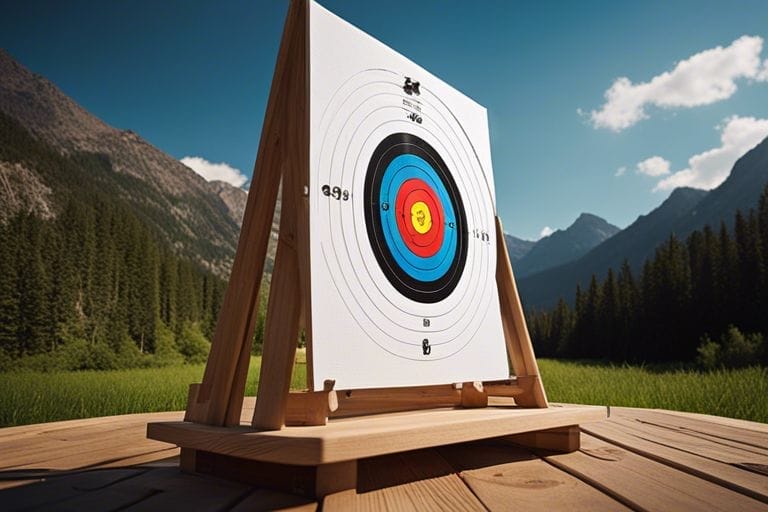When it comes to honing your skills with a compound bow, having a reliable and durable archery target is essential. While purchasing a target is always an option, constructing your own can be a cost-effective and rewarding project.
In this blog post, I will guide you through the process of building your own archery target for a compound bow.
By following these steps, you can create a target that meets your specific needs and provides a sturdy surface for practicing with your compound bow. Let’s get started on creating your own custom archery target.
Key Takeaways:
- Materials: Use dense and tightly packed materials such as rubber mulch or foam layers to build a suitable archery target for a compound bow.
- Target Face: Make sure to use a high-quality target face to ensure durability and good arrow penetration for your compound bow.
- Size and Placement: Consider the size and placement of your archery target to ensure safety and optimal shooting conditions for your compound bow practice.
Equipment and Materials
Now that you’ve made the decision to build your own archery target for your compound bow, you’ll need to gather the necessary equipment and materials. A great resource for DIY targets can be found on DIY Targets : r/Archery.
Here, you can find valuable insights and advice from fellow archery enthusiasts who have built their own targets.
Choosing the Right Materials for Durability
When it comes to building an archery target for a compound bow, durability is key. You want your target to withstand repeated use without falling apart. The most commonly used materials for DIY archery targets include high-density foam, layered foam sheets, and compressed straw. Each of these materials has its pros and cons, so it’s essential to research and consider the durability and cost of each before making your decision.
Tools Required for the Construction
In addition to choosing the right materials, you’ll also need to have the necessary tools on hand to construct your archery target. Some of the basic tools required for this project include a utility knife, measuring tape, a saw, and a staple gun. These tools will be essential for cutting and assembling the materials to create a sturdy and effective target for your compound bow.
Design & Formation of the Target
The design and formation of your archery target for a compound bow is crucial for ensuring its effectiveness and longevity. By paying attention to the materials, size, and shape of the target, you can create a sturdy and reliable surface to practice your archery skills.
Planning the Target Size and Shape
When planning the size and shape of your archery target for a compound bow, consider the type of shooting you will be doing and the space available for your target. A standard target size for compound bows is 48 inches in diameter, which provides a good balance between a large enough surface area and portability. The circular shape allows for even wear and tear, as well as easy rotation of the target face to extend its lifespan.
Innovative Features for Enhanced Target Longevity
To enhance the longevity of your archery target, you can incorporate innovative features into its design. One option is to use self-healing foam as the target material, which can withstand repeated arrow impacts and maintain its integrity over time. Additionally, you can consider adding replaceable target faces to extend the overall lifespan of the target and save on costs in the long run. By incorporating these features, you can ensure that your archery target remains durable and reliable for countless practice sessions.

Construction Process
After gathering all the necessary materials and tools, you can begin the construction process of building an archery target for a compound bow. This involves creating a sturdy frame, filling it with the appropriate materials, and adding a target face for aiming practice.
Step-by-Step Assembly Technique
When assembling the frame for your archery target, it’s important to use durable and weather-resistant materials. You can use a combination of pressure-treated lumber and exterior-grade plywood to create a sturdy structure. Here’s a breakdown of the assembly process:
| Step 1 | Measure and cut the lumber to the desired dimensions for the frame, ensuring it is square and level during assembly. |
| Step 2 | Secure the pieces of lumber together using wood screws or bolts to create a solid frame that can withstand repeated use. |
| Step 3 | Fill the frame with suitable materials, such as tightly-packed foam blocks or compressed straw, to provide a dense yet forgiving target surface. |
Adjustability and Maintenance Considerations
When building an archery target for a compound bow, it’s important to consider its adjustability and maintenance needs. You may want to incorporate features that allow you to easily replace the target face or adjust the angle of the target to accommodate different shooting distances. Additionally, regular maintenance, such as inspecting and replacing worn-out target materials, will ensure that your archery target remains effective and safe to use.
Usage and Maintenance
Despite the durability of your homemade archery target, proper usage and regular maintenance are key to ensuring its longevity. If you want some inspiration for building archery targets, you can check out this article on Build Your Own DIY Archery Target.
Proper Usage to Promote Endurance and Agility
When using your archery target, it’s important to vary your shooting positions and distances to promote endurance and agility. Rotating the target and adjusting the angle will help distribute the wear and tear more evenly across the surface, ensuring that it lasts longer.
Maintenance Tips for Extending Target Life
To extend the life of your archery target, consider implementing the following maintenance tips:
- Regular Inspection: Check for signs of wear, such as tears or holes, and repair them promptly.
- Proper Storage: When not in use, store your target in a cool, dry place to prevent it from deteriorating due to exposure to the elements.
- Rotate the Target: Regularly rotate the target to ensure even wear and tear, extending its lifespan.
Knowing how to properly use and maintain your archery target will not only prolong its lifespan but also provide a consistent and reliable practice surface for your compound bow.

Conclusion
With these considerations in mind, you now have the knowledge and ability to build your own archery target for a compound bow. By carefully selecting the right materials, constructing a sturdy frame, and ensuring proper filling and covering, you can create a target that will withstand the force of your arrows and provide a reliable practice surface. Remember to prioritize safety and quality in every step of the process to ensure that your target will last for countless shooting sessions. Happy shooting!
FAQ
What materials do I need to build an archery target for a compound bow?
To build an archery target for a compound bow, you will need a block of high-density foam, such as ethafoam or layered foam sheets. You will also need a wooden frame to encase the foam, as well as a tarp or durable fabric to cover the foam and protect it from the elements. Additionally, you will need screws, a saw, and a drill to assemble the target.
What are the dimensions for building an archery target for a compound bow?
The dimensions of the archery target will depend on your shooting range and personal preferences. However, a common size for an archery target suitable for a compound bow is 48 inches in height, 24 inches in width, and 10 inches in depth. It’s important to ensure that the target is large enough to catch arrows without risk of missing the target and damaging surrounding property.
How do I assemble the archery target for a compound bow?
First, construct the wooden frame to encase the foam, ensuring that it is sturdy and tightly fits around the foam. Next, place the high-density foam block in the center of the frame and secure it in place with screws. Then, cover the foam and frame with a tarp or durable fabric, securing it tightly around the frame. Ensure that the fabric is taut and the target is free from any obstructions. Your archery target for a compound bow is now ready for use.


